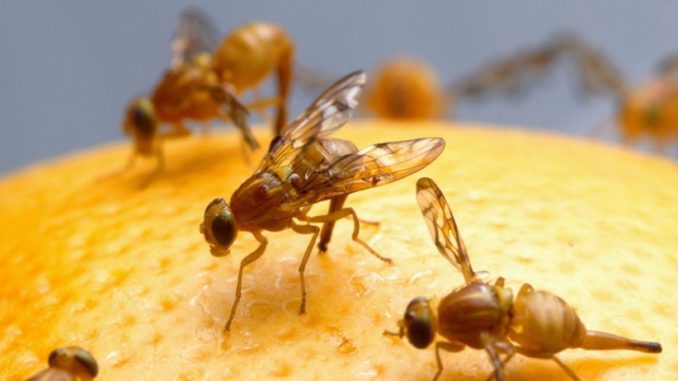
SANTIAGO – Since 1995, Chile has been declared as free of the fruit fly. Within the South American continent, it is the only nation that holds this category, which constitutes a comparative advantage for the export industry of fruits and vegetables. This is why the Livestock Agricultural Service immediately activated its alarms when an outbreak of this insect was recently identified, an issue that has occurred at least five times since 2013.
A new outbreak of fruit fly in the El Golf neighborhood, in Las Condes, Santiago de Chile alarmed the SAG again during the last days. The director of the organization, Angel Satori, met with the mayor Joaquín Lavín to define the steps to follow and thus exterminate the plague.
According to Satori, being free of this insect has allowed Chile to “export fruit for 5,200 million dollars per season to more than 130 countries in the world”. When confirming the presence of a Ceratitis capitata, the SAG has begun by tracing a radius of 7.2 km from the point at which the insect was identified. The content within that delimitation is called “dirty zone” and there are concentrated efforts for the extermination of the plague.

In the last four years the fruit fly has appeared in different areas of Chile. When plotting their sightings, it can be identified that they have preferred to locate themselves in the northern and central sector of Chile.
On January 2, 2013, a young male fly fell into a trap located in an orange tree. Two days later, in the same street, an insect of the same characteristics fell into the frame of a peach tree. Then a fly outbreak was declared and a regulated area of 7.2 km radius was created. In order to eradicate them, soil clean-ups were performed, as well as the inspection and burial of suspect fruits and the application of insecticides to the soil. More than 100 people worked in this operation.
In 2015 more than 300 fly larvae were located in La Serena, Coquimbo On March 19, eight fruit fly larvae were discovered in a peach tree. This is how the alarm began in La Serena, a city in which in a range of one and a half month 318 larvae were detected in fruits such as peaches, figs and quinces.
In February 2015, the presence of Ceratitis capitata was detected in the Tarapacá Region, in the Iquique sector. Only two months later, the insect was again present in Valparaíso, when in April an adult female inseminated was found in a lemon tree. This outbreak occurred specifically in the area of San Esteban in Valparaíso and within a week four similar insects were captured.
In 2016 the fruit fly reappears within walking distance of La Vega Central. The last time the fruit fly was present in the Metropolitan Region was in 2006, when it worried about settling in the abundant fruit of La Vega, in Recoleta. Ten years later, it would appear again a few kilometers away, in Conchalí. On the same day, five insects were found in a trap set in a plum tree.–MercoPress



